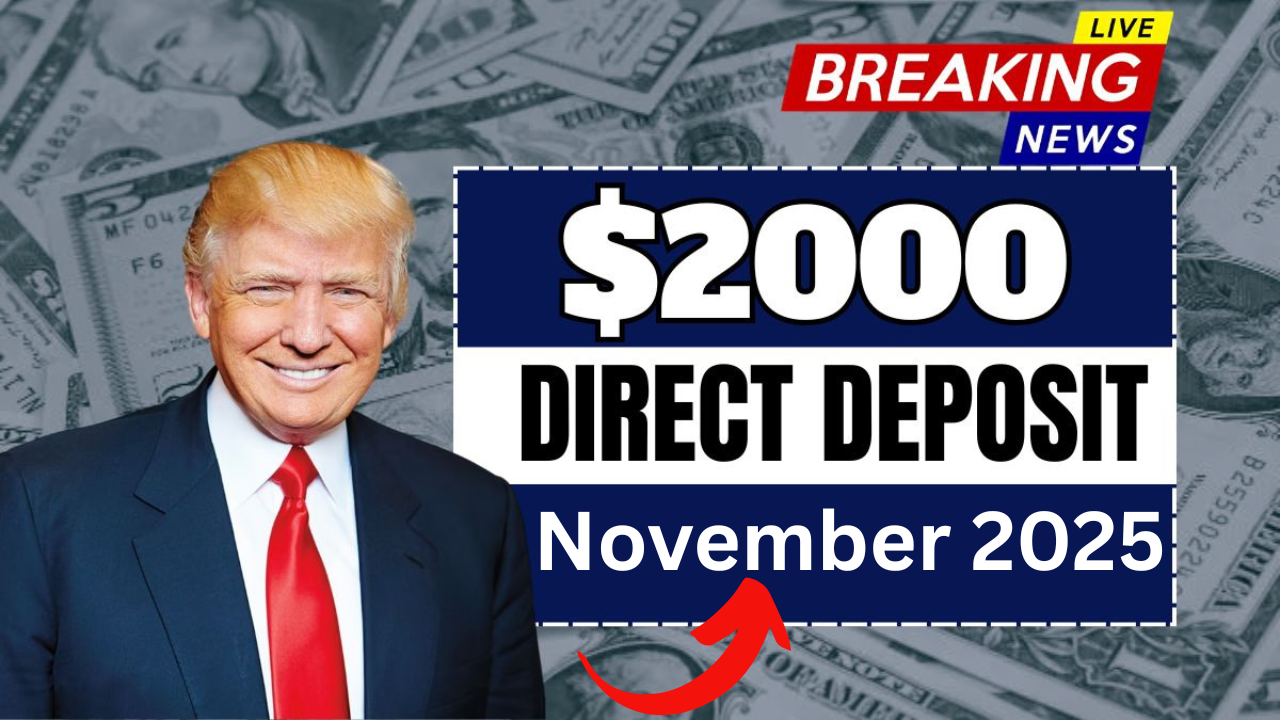Good news is rolling in across the United States—the Internal Revenue Service (IRS) has officially approved the long-awaited $2,000 direct deposit payments for eligible U.S. citizens. With millions of families facing financial hardship, this announcement brings relief to families, retirees, and working people who have been eagerly awaiting assistance to help with rising expenses.
Here’s everything you need to know about the IRS-approved $2,000 direct deposit, including who’s eligible, when to expect it, and how to make sure you don’t miss your payment.
What is a $2,000 Direct Deposit Payment?
The $2,000 direct deposit is part of a federal relief effort designed to help Americans cope with ongoing inflation, housing costs, and the economic downturn. This IRS-approved payment is intended to assist low- and middle-income citizens who are suffering from rising prices for essential items like food, fuel, and healthcare.
This program follows a series of smaller relief initiatives launched in 2024 and early 2025, but what sets it apart is its nationwide reach and direct deposit method, which ensures that funds reach people’s accounts quickly and securely.
Who Qualifies for the $2,000 Direct Deposit?
The IRS has laid out clear eligibility rules for the $2,000 payment to ensure that those who need it most receive it.
Here’s a detailed breakdown:
-
U.S. Citizenship or Residency
You must be a U.S. citizen or legal resident with a valid Social Security number. Non-resident aliens or individuals without valid tax identification numbers are not eligible. -
Income Requirements
Eligibility is based on adjusted gross income (AGI) from your 2024 tax return:-
Single filers: Up to $75,000 qualify for the full $2,000.
-
Married couples filing jointly: Up to $150,000 qualify for the full amount.
-
Heads of household: Up to $112,500 qualify.
-
Partial payments will be issued to those earning slightly above these limits, gradually phasing out beyond those thresholds.
-
-
Dependents
Households with dependents — including children, seniors, or disabled family members — may receive additional relief, with the final amount varying based on family size and filing status. -
Tax Filers and Non-Filers
-
Tax filers: The IRS will use 2024 tax data to automatically send payments.
-
Non-filers: Those who don’t typically file taxes, such as seniors receiving Social Security (SSA), SSDI, or VA benefits, will still receive payments automatically based on federal benefit records.
-
When will payments be sent?
The IRS has confirmed that the first batch of $2,000 direct deposits will begin going out in mid-November 2025, and payments will continue until early December 2025.
This is the expected timeline:
- Direct deposits: Will begin November 15, 2025, for those with updated bank information.
- Paper checks: Will begin mailing November 25, 2025, for those without direct deposit details.
- Debit cards (EIP cards): Expected to roll out by December 1, 2025.
Most Americans who qualify should see the funds in their accounts within 7–10 business days of the IRS confirming processing.
How to Check Your Payment Status
To ensure you don’t miss your payment, visit the official IRS “Get My Payment” portal on IRS.gov. You can:
- Track your payment status and delivery method (direct deposit or paper check).
- Update your banking or mailing address, if necessary.
- Confirm your eligibility and amount.
Be cautious — the IRS warns people about fake websites or scam messages claiming to deliver funds quickly. The IRS never asks for personal or banking details by phone, text, or email. Always trust official government sources.
IRS Guidance for Senior Citizens and Benefit Recipients
Senior citizens who receive Social Security, SSI, SSDI, or Veterans Affairs (VA) benefits do not need to file separately. The IRS will automatically process their $2,000 payment using existing federal records.
However, if your banking information or mailing address has recently changed, you should update it immediately through your My Social Security account or the IRS website to avoid delays.
Why the $2,000 Payment Is Important
For millions of Americans, this relief couldn’t have come at a better time. Rising costs for groceries, rent, and healthcare have strained family budgets across the country. The $2,000 direct deposit is expected to provide much-needed financial support and boost consumer confidence during the holiday season.
Economists also believe this stimulus will help strengthen local economies, as many recipients will spend the money on daily necessities and household expenses.
Final Words
The IRS-approved $2,000 direct deposit is another significant step toward easing financial burdens for millions of Americans. Whether you’re a retiree living on a fixed income, a working parent trying to supplement your salary, or someone recovering from a recent financial crisis—this payment provides much-needed support.
If you meet the eligibility requirements, make sure your tax records and bank details are current so you can receive your payment without delay.
FAQs: $2,000 Direct Deposit Approved by IRS
Q1: Who qualifies for the $2,000 direct deposit?
U.S. citizens and residents earning under income limits — $75,000 (single), $150,000 (married), or $112,500 (head of household).
Q2: When will the payments arrive?
Direct deposits begin November 15, 2025, with paper checks and debit cards following later in the month.
Q3: Do Social Security and SSI recipients qualify automatically?
Yes. Payments will be sent automatically using existing SSA, SSI, SSDI, or VA records.
Q4: Is the payment taxable?
No. The $2,000 payment is not taxable and won’t affect your 2025 refund or benefit eligibility.
Q5: How can I confirm my payment status?
Check your status through the official IRS “Get My Payment” tool on IRS.gov — the safest and most accurate way to track your payment.

